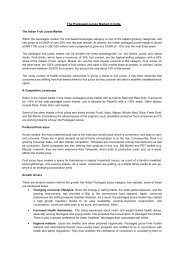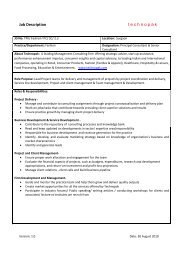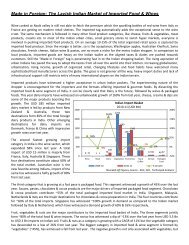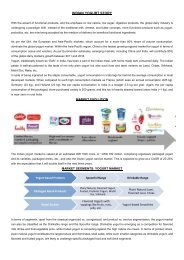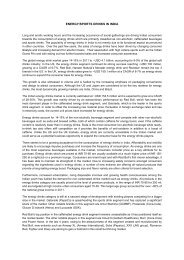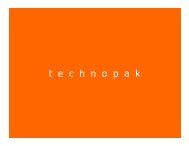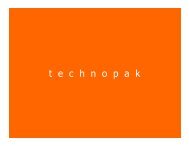a quarterly report by - Technopak
a quarterly report by - Technopak
a quarterly report by - Technopak
You also want an ePaper? Increase the reach of your titles
YUMPU automatically turns print PDFs into web optimized ePapers that Google loves.
Facility Planning: Role in<br />
Performance Enhancement<br />
perspective<br />
a quar terly repor t <strong>by</strong><br />
Volume 02 / 2009<br />
05<br />
In recent times, patient expectations and demand for quality healthcare facilities in India have undergone<br />
a transformational shift. However, hospitals of yesteryears were neither planned to accommodate future<br />
growth nor to provide the care and service standards that are expected today.<br />
| Volume 02<br />
Over time as demand grew, so did hospitals. However, this growth was accretive in nature and the ad hoc<br />
additions or extensions resulted in various trade-offs, leading to operational inefficiencies and compromised<br />
functionality.<br />
In today’s changing environment, as hospitals look<br />
to improve their performance, they should take into<br />
account various design parameters that can result<br />
in direct or indirect economic benefits. Some of the<br />
parameters that can lead to operational efficiencies<br />
and there<strong>by</strong>, cost savings are:<br />
•Patient<br />
monitoring<br />
•Patient<br />
flow<br />
•Nurse<br />
travel distances<br />
•Standardization<br />
A large part of a patient’s ‘length of stay’ is spent under critical or post surgical care, where constant patient<br />
observation and monitoring is essential. In this stage, patients are extremely vulnerable and response<br />
times become very important. For smooth recovery of patients, it is essential that staff be able to respond<br />
to the clinical need of the hour. For this, patients should be under direct nurse observation at all times.<br />
This can be achieved in many ways, one of them<br />
through an appropriate layout that allows staff to<br />
observe, manage and attend to patients constantly.<br />
A C-shaped patient care unit with 8 to 10 bed<br />
management unit size is considered good.<br />
A large percentage of patients follow a well<br />
established and clear patient pathway during a<br />
hospital visit.<br />
Good alignment of a patient’s physical journey<br />
with his or her clinical journey can lead to better<br />
and quicker delivery of care. Patient flows should<br />
Exhibit 14<br />
Imperatives for Redesign:<br />
• Capacity constraints<br />
• Streamlining growth<br />
• Enhancing revenue streams through efficient design<br />
• Addition/expansion of service lines<br />
• Patient expectations<br />
• Existing life of building<br />
• Accommodation of new Technology<br />
• Reengineering to respond to advancements in medicine<br />
• Change in ownership<br />
• Branding<br />
Exhibit 15 Patient Monitoring<br />
Ideal Unit Configuration for Critical Care<br />
Building Operational Efficiency in Healthcare Delivery | 50



